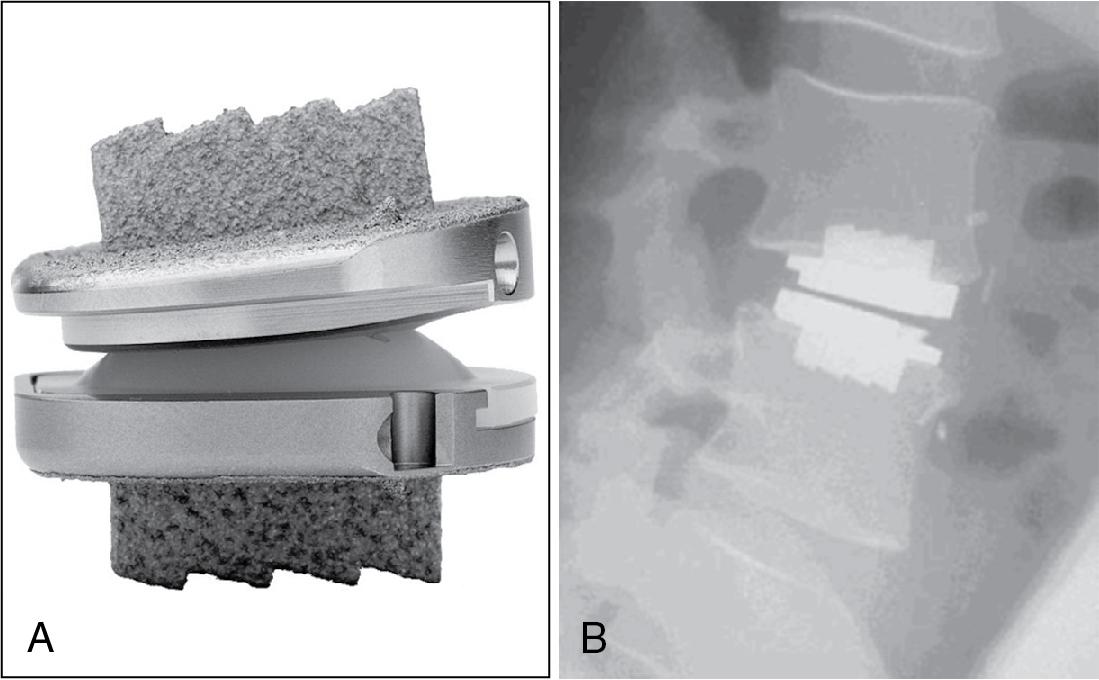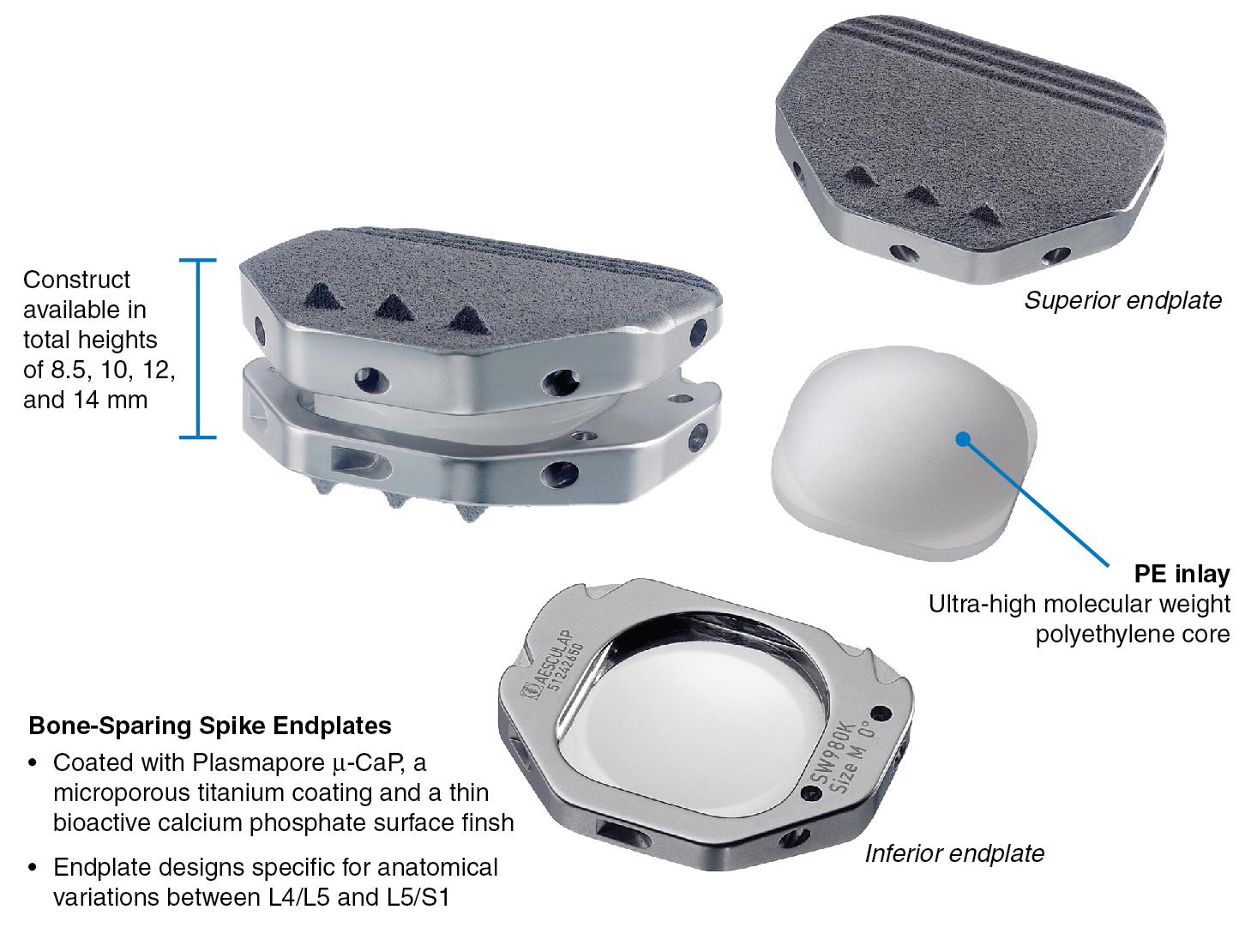Physical Address
304 North Cardinal St.
Dorchester Center, MA 02124
Neural decompression procedures violate the structural integrity of the spine and may lead to segmental spinal instability unless fusion is performed. Spinal fusion procedures increase stress at adjacent spinal levels and may accelerate the degenerative process leading to adjacent level degeneration, instability, facet joint degeneration, spinal stenosis, and vertebral body fracture. An initial fusion procedure may generate the need for further spinal procedures such as implant removal, pseudarthrosis repair, or debridement of operative site infection. In addition, bone graft harvest for fusion procedures is accompanied by a myriad of problems, including the potential for development of chronic bone graft donor site pain. When the indication for spinal fusion is axial pain without associated neural compression, pain may persist despite achievement of a radiographically healed fusion.
The rationale for development of lumbar total disc replacement (TDR) as an alternative surgical procedure to spinal fusion for treatment of discogenic axial low back pain was based on the following goals:
To avoid the negative effects associated with lumbar fusion (e.g., pseudarthrosis, need for additional procedures for implant removal, bone graft donor site problems, adjacent segment pathology)
To protect adjacent levels from iatrogenically accelerated degeneration
To provide improved treatment outcomes with respect to relief of low back pain
To enhance postoperative recovery (earlier return to work and activity)
Lumbar fusion results in load transfer to unfused proximal and distal spinal segments resulting in increased intradiscal pressure and increased intersegmental motion at neighboring spinal segments. This may result in the development of radiographic degenerative changes in the adjacent spinal segments (adjacent segment degeneration) and symptoms requiring additional surgical intervention (adjacent segment disease). It has been estimated that the mean annual rate of adjacent segment disease (development of symptoms sufficiently severe to require additional surgery for decompression or arthrodesis) ranges from 0.6% to 4% per year following a lumbar arthrodesis procedure. Estimates of the 5- and 10-year risk of developing adjacent segment disease following lumbar arthrodesis range from 3% to 16.5% and 6% to 26%, respectively. Some factors that increase the risk of development of adjacent segment disease include multilevel fusion, fusions adjacent to but not including L5–S1, and laminectomy adjacent to a fusion. Whether the radiographic and clinical findings are a result of the iatrogenically created rigid spinal segment or progression of the natural history of an underlying degenerative process remains controversial. The term adjacent segment pathology (ASP) has been proposed to describe changes that occur adjacent to a previously operated spinal level. Two subtypes are identified: (1) radiographic ASP (RASP) is used to describe radiographic changes, including MRI findings which occur at an adjacent motion segment; and (2) clinical ASP (CASP) is used to refer to clinical signs and symptoms that occur adjacent to a previously operated spinal motion segment.
In the United States, lumbar TDR has received Food and Drug Administration (FDA) approval for treatment of one or two-level degenerative disc disease (DDD) in the lower lumbar spine in skeletally mature patients with no more than grade 1 spondylolisthesis at the involved level. DDD is defined as discogenic back pain due to degeneration of the disc and confirmed by patient history, physical examination, and radiographic studies. Surgery should be reserved for patients who have not responded to at least 6 months of conservative therapy.
Contraindications to lumbar TDR have been divided into four main groups:
Painful lumbar spinal pathology unrelated to the target intervertebral disc or which may respond to less complex treatments. Pain related to facet joint degeneration, radiculopathy due to disc herniation or spinal stenosis, multilevel discogenic pain, and poorly defined pain syndromes are unlikely to respond favorably to treatment with single-level lumbar TDR.
Conditions that potentially compromise stability of a lumbar disc prosthesis. Examples include osteoporosis, spinal instability (spondylolysis, lytic spondylolisthesis, degenerative spondylolisthesis > grade 1, prior laminectomy), and spinal deformities.
Limited or absent segmental motion at the operative level: severe spondylosis, disc height <3 mm, prior lumbar fusion, and ankylosing spondylitis or other spinal stiffening diseases.
Patient-specific factors: metal allergy, systemic disease (e.g., diabetes mellitus), malignancy, active infection, morbid obesity, chronic steroid use, abdominal pathology, or prior abdominal surgery that would preclude an anterior retroperitoneal approach, and pregnancy.
Studies investigating the prevalence of contraindications in the population of patients presenting to spine surgeons for surgical treatment of lumbar degenerative pathology have demonstrated that only a small percentage of patients are appropriate candidates for lumbar TDR. One study reported that approximately 14% of lumbar fusion candidates and 5% of all lumbar surgery candidates would meet the criteria for treatment with lumbar TDR.
Two artificial discs are currently approved by the FDA for implantation in the United States: prodisc L (Centinel Spine LLC, West Chester, PA) and activL (Aesculap Implant Systems LLC, Center Valley, PA).
The prodisc L is a semiconstrained articulating metal-on-polyethylene implant composed of two cobalt-chromium-molybdenum alloy endplates and an ultrahigh–molecular-weight polyethylene (UHMWPE) core. The polyethylene core locks into the lower endplate and prevents core extrusion. Small keels and a titanium, plasma-sprayed finish on the device endplates provide for both immediate fixation and long-term fixation by osseous ingrowth ( Fig. 32.1 ).

The activL is a mobile-bearing modular implant consisting of two metal endplates with an UHMWPE core that supports controlled translational and rotational movement. Along with its traditional ball and socket design, it also allows up to 2 mm of anteroposterior (AP) translation. The bone-contacting endplates are coated with Plasmapore μ-CaP, a microporous titanium coating and thin bioactive calcium phosphate surface finish to increase implant stability and bone ingrowth. The activL achieves initial stability through endplate spikes or a keel ( Fig. 32.2 ).

The Charité artificial disc (DePuy Spine, Inc., Raynham, MA), which was the first implant to receive FDA approval for lumbar TDR, was discontinued from the market in 2011. It possessed an unconstrained three-part anatomic design. It is an articulating metal-on-polyethylene implant. It has a mobile core composed of moderately cross-linked UHMWPE. The core is free to move between the two cobalt-chromium-molybdenum alloy endplates. Teeth on the undersurface of the endplates provide anchorage to the vertebrae. A metal wire surrounds the core to aid in imaging. Many alternative lumbar disc replacement designs are currently under study both in the United States and internationally.
Patient positioning for a lumbar TDR is similar to an anterior lumbar interbody fusion (ALIF). An inflatable bolster may be placed under the sacrum to extend the L5–S1 disc space and to allow adjustment of lumbar lordosis. Placement of the bolster directly behind the lumbar spine when performing lumbar TDR should be avoided because it tends to fish-mouth the disc space, making critical parallel distraction more difficult. A midline (rectus splitting) surgical approach or paramidline (lateral to rectus) surgical approach may be used to access the lower lumbar disc levels. A retroperitoneal approach is preferred over a transperitoneal approach. As in an ALIF approach, careful identification and retraction of the ureter, peritoneum, sympathetic plexus, and blood vessels are required. Lower extremity pulse oximetry is useful to ensure adequate lower extremity perfusion during and following vessel retraction. Thorough discectomy and accurate midline localization are critical to ensure a technically well-placed lumbar TDR. The anterior, posterior, and lateral margins of the disc space should be clearly delineated. The midline is marked using an intraoperative fluoroscopic AP Ferguson view. A lateral fluoroscopic view is helpful to confirm parallel disc distraction. The lumbar TDR should only recreate the native disc height because overstuffing may lead to posterior structure (facet capsule) tension and pain. The bony end plate should be preserved to minimize risk of subsidence or bridging ossification.
Become a Clinical Tree membership for Full access and enjoy Unlimited articles
If you are a member. Log in here